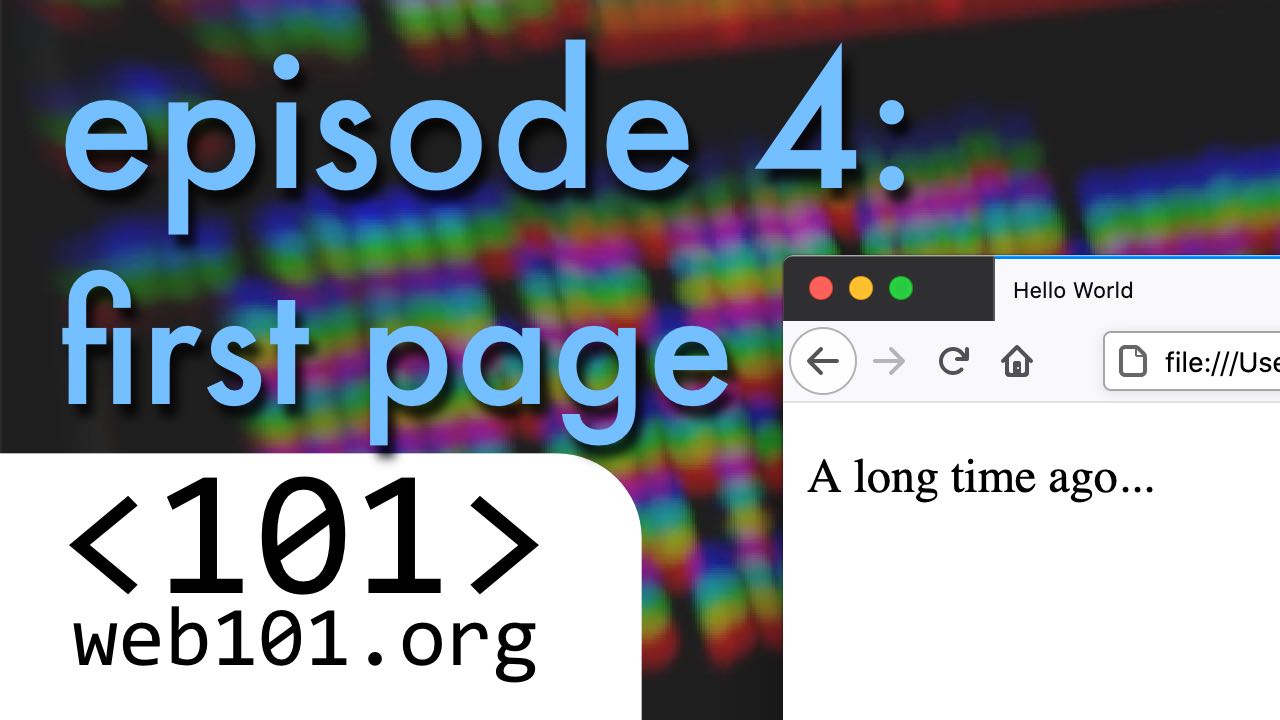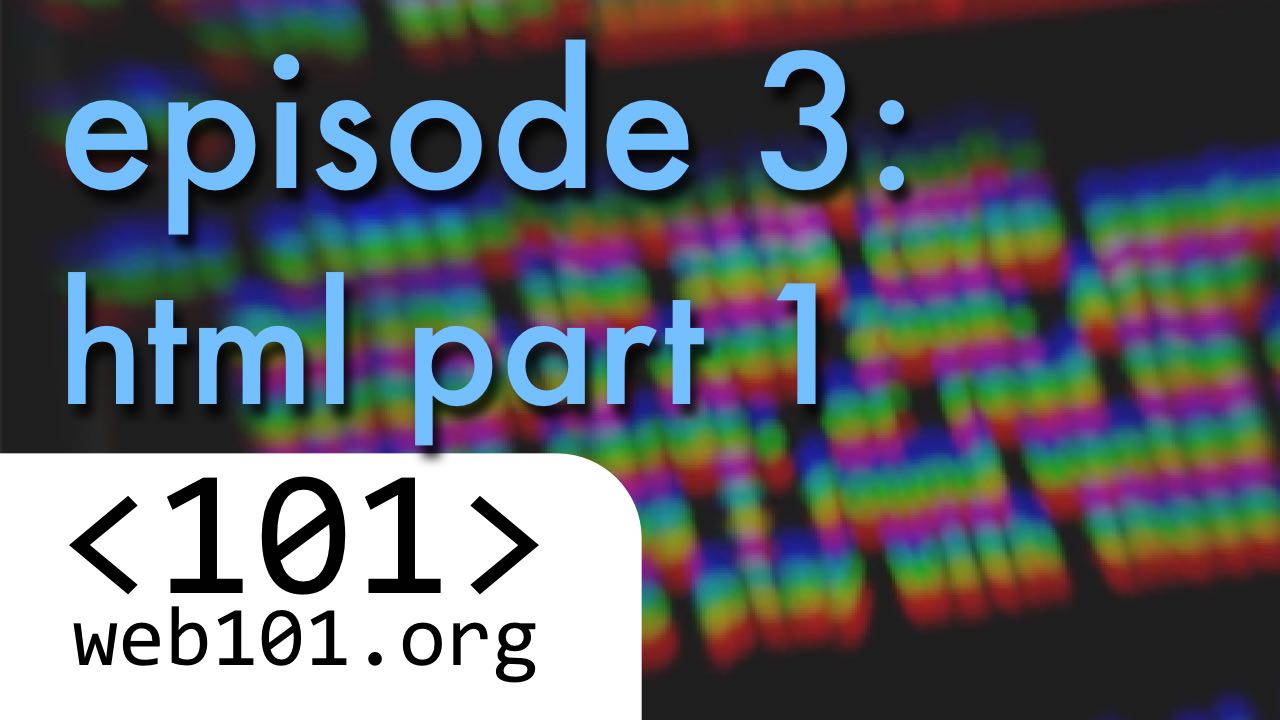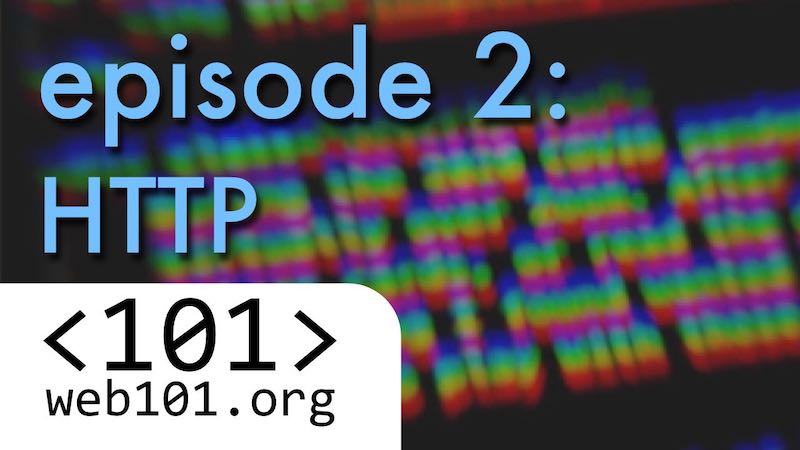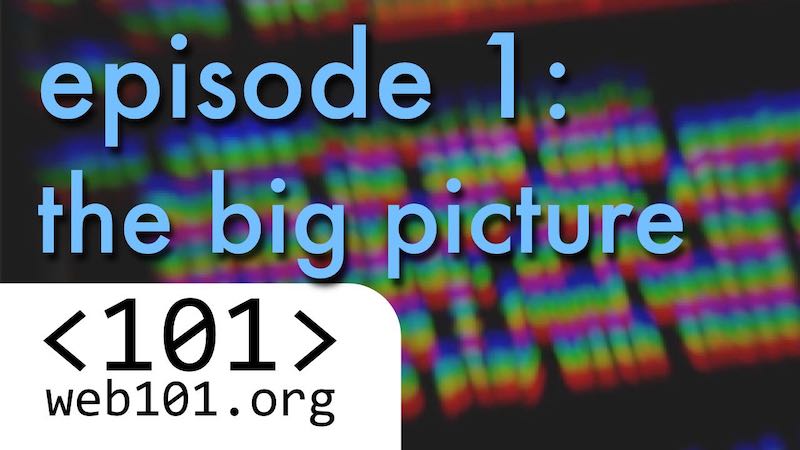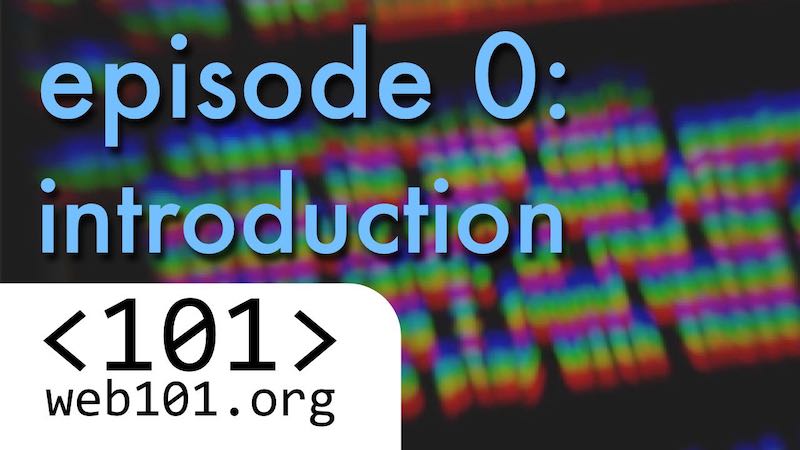Latest Episode
We've seen enough HTML to build our first page and view it in a browser. We'll go over the most basic software tools in web development - a web browser, and a text editor.
HTML Part 1
Posted on Sunday, Jan 10, 2021 | Category: episodes | webdev, http, html, tags, elements, attributesHypertext Markup Language - HTML is the scaffolding of a web page. It defines the content and structure of a page, and links together all the pieces required to deliver the page's visual layout and interactivity. Elements, tags, attributes, content, flow, phrasing, and more!
The Hypertext Transfer Protocol is at the heart of the web. It is a fairly straightforward communications protocol allowing a wide variety of clients to talk to a wide variety of servers. The ease of use of HTTP has helped lead to the web becoming nearly synonymous with "the internet".
In this episode, I thought it might help to look back at a brief history of where the ideas for the web came from, and some of the major milestones over the past many decades. I'll also touch on the major pieces of the web we'll tackle in this project - HTML, CSS, Javascript, HTTP, Python, and MySQL. Each of these major pieces will have many episodes devoted to it. Hopefully at the end, you'll have a good idea of how they all fit together, as well as some basic understanding of each.
An Introduction
Posted on Friday, Dec 4, 2020 | Category: administrivia, introduction | webdev, show infoI've always enjoyed teaching and mentoring. A couple of years ago I had the great privilege to teach a class in web programming for the Computer Science department at the University of Arizona. So I thought I would dust off that course material, update it for 2020, and release it again as a podcast and video series. I hope you find it useful.
